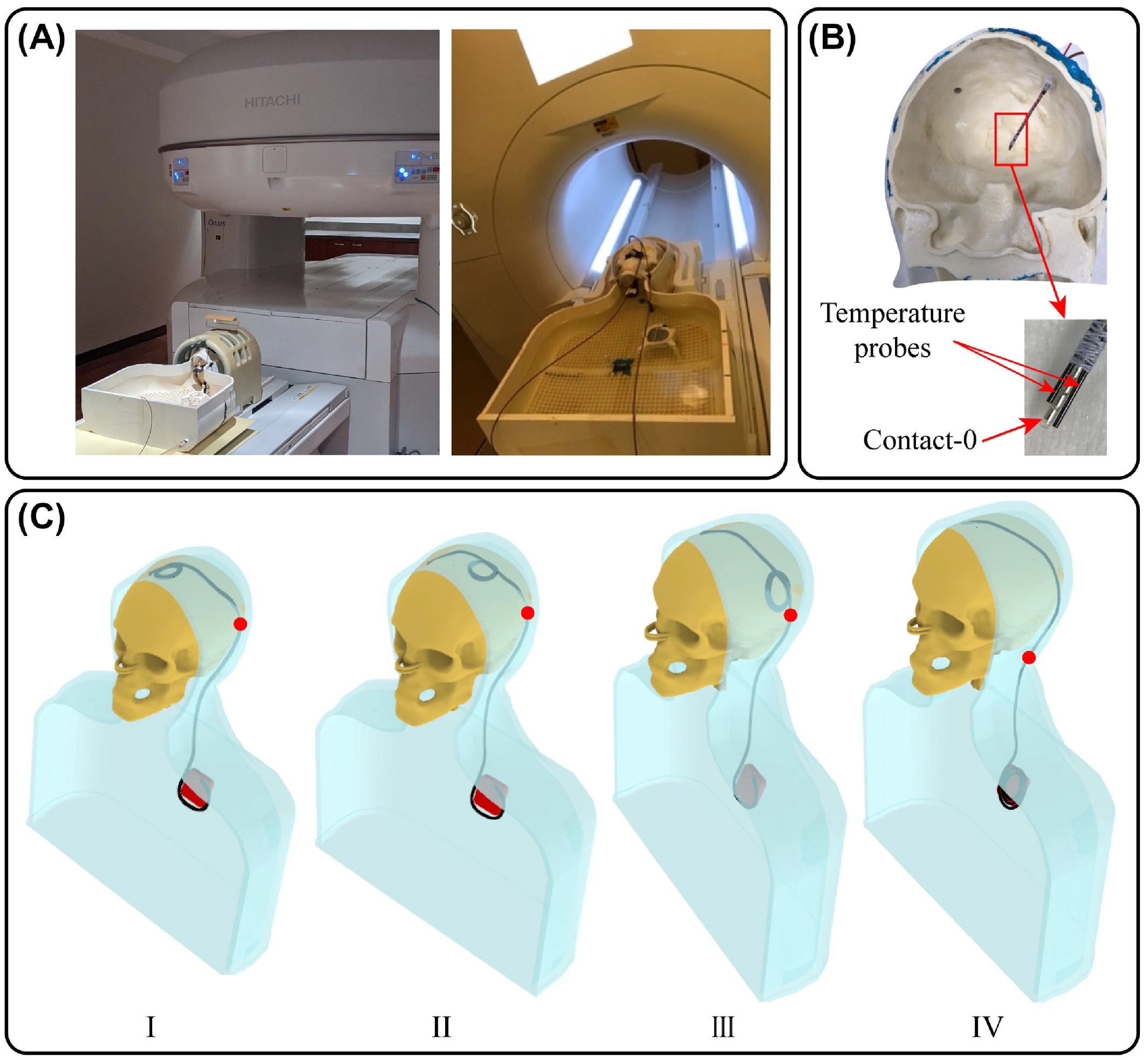Vertical open‐bore MRI scanners generate significantly less radiofrequency heating around implanted leads: A study of deep brain stimulation implants in 1.2T OASIS scanners versus 1.5T horizontal systems
Ehsan Kazamivalipour of UMRAM collaborated with researchers at Northwestern University to investigate the interaction of a vertical bore scanner with implants. They showed that the implant heating problem is significantly less when using the vertical bore scanner. This is because the electric field direction is mainly orthogonal to the implanted lead in these scanners. The article has been published in Magnetic Resonance in Medicine with the title of “Vertical open‐bore MRI scanners generate significantly less radiofrequency heating around implanted leads: A study of deep brain stimulation implants in 1.2T OASIS scanners versus 1.5T horizontal systems.” The authors are Ehsan Kazemivalipour, Bhumi Bhusal, Jasmine Vu, Stella Lin, Bach Thanh Nguyen, John Kirsch, Elizabeth Nowac, Julie Pilitsis, Joshua Rosenow, Ergin Atalar and Laleh Golestanirad.
ABSTRACT
Purpose
Patients with active implants such as deep brain stimulation (DBS) devices are often denied access to MRI due to safety concerns associated with the radiofrequency (RF) heating of their electrodes. The majority of studies on RF heating of conductive implants have been performed in horizontal close‐bore MRI scanners. Vertical MRI scanners which have a 90° rotated transmit coil generate fundamentally different electric and magnetic field distributions, yet very little is known about RF heating of implants in this class of scanners. We performed numerical simulations as well as phantom experiments to compare RF heating of DBS implants in a 1.2T vertical scanner (OASIS, Hitachi) compared to a 1.5T horizontal scanner (Aera, Siemens).
Methods
Simulations were performed on 90 lead models created from post‐operative CT images of patients with DBS implants. Experiments were performed with wires and commercial DBS devices implanted in an anthropomorphic phantom.
Results
We found significant reduction of 0.1 g‐averaged specific absorption rate (30‐fold, P < 1 × 10−5) and RF heating (9‐fold, P < .026) in the 1.2T vertical scanner compared to the 1.5T conventional scanner.
Conclusion
Vertical MRI scanners appear to generate lower RF heating around DBS leads, providing potentially heightened safety or the flexibility to use sequences with higher power levels than on conventional systems.
For more;
